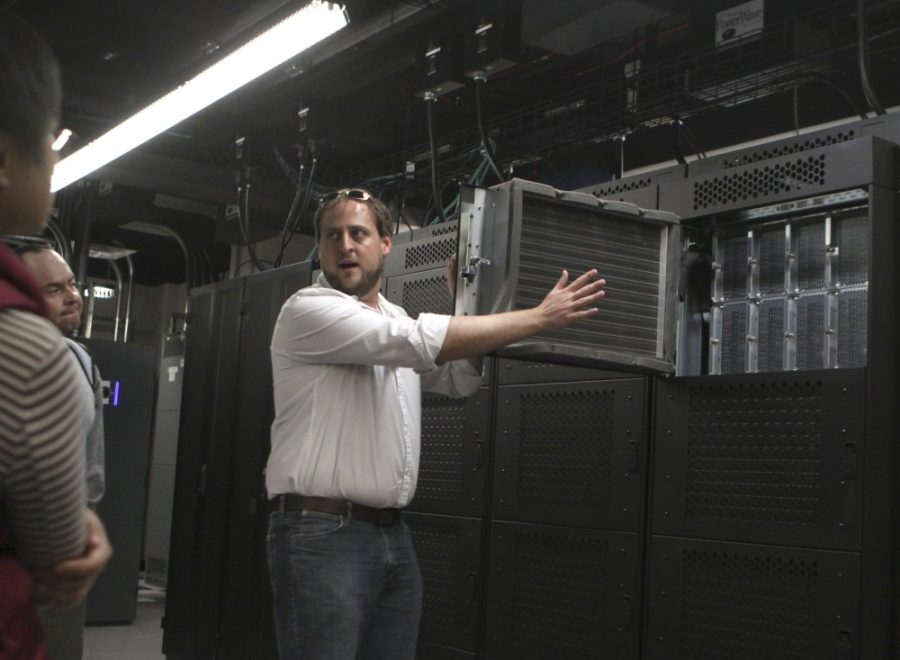The UA is looking to simplify the search for research data.
A ribbon cutting ceremony occurred Monday in celebration of the new Research Data Center grand opening. The center has five research computers, research data storage systems and acts as a space for college and department-owned research computing systems. The center, which had facility and equipment costs of about $5 million, is accessible to faculty and students free of charge.
The center was funded from grants, the Technology and Research Initiative Fund and college deans, according to Derek Masseth, senior director of Infrastructure Services. No student fee money went toward the center’s facility or equipment, he said.
The center aims to allow researchers to study large amounts of data in a shorter amount of time.
Michael Bruck, assistant director for Research Computing, explained that laptops generally use only one to two processors, but many times researchers need to access many more in order to process large amounts of research. There are more than 4,000 processors in the new center.
“The computers can either be used for 4,000 jobs or several hundred that use multiple processors,” Bruck said.
Richard Holland, marketing specialist for the Office of Student Computing Resources, said that in the past, if research data took eight weeks to process, it will now only take one or two weeks.
Both professors and students said they will utilize the center’s resources for their own research.
Joellen Russell, an assistant professor in geosciences, said she will use the research center to build climate models of Earth.
“In the past, my students have been recruited from other universities where they are able to provide better equipment,” she said. “Now that we have this new center, students from other schools will now come here.”
Individuals wanting to do research do not have to physically go to the center to use its equipment — they can simply access the center’s data server and conduct research from their desktop or iPhone.
The center also offers a research consulting service that can help researchers utilize computing resources more effectively. These services provide expert consultation to researchers in the areas like statistical research and analysis.
Bonnie Hurwitz, a graduate student studying ecology and evolutionary biology, is studying how viruses differ in certain parts of the ocean. In her research, she said she needs to process 40 million sequences and “probably a quadrillion” base pairs, or a pair of nitrogenous bases, associated with it.”
“Each one of those takes enormous compute times itself,” she said. “The resources are amazing in the sense that we have a lot of memory associated with the computers… and we have many resources in our disposal that we can use.”









